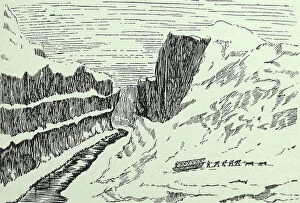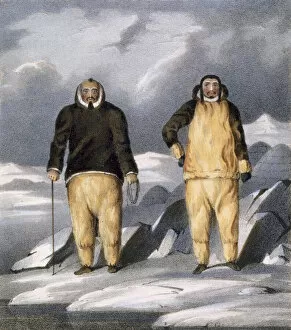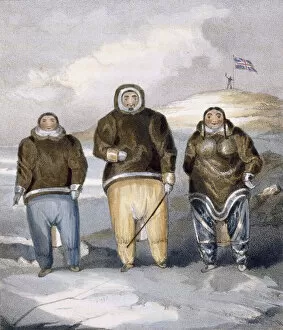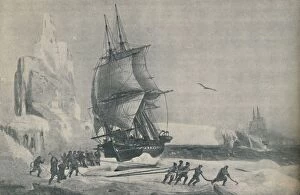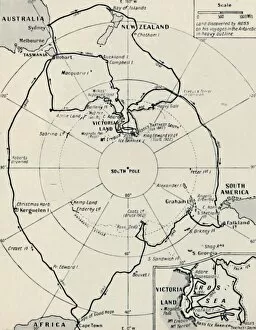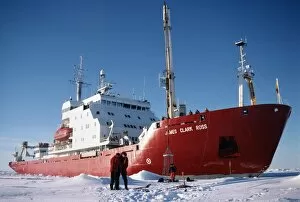James Clark Ross Collection
Sir James Clark Ross was a 19th-century British naval officer and explorer who made significant contributions to the exploration of the South Pole
All Professionally Made to Order for Quick Shipping
Sir James Clark Ross was a 19th-century British naval officer and explorer who made significant contributions to the exploration of the South Pole. His expeditions, depicted in various lithographs and engravings, showcased his remarkable discoveries and encounters with native people. In the vibrant lithograph titled "Koniaroklik and Neweetioke, " we catch a glimpse of Ross's interactions with indigenous individuals during his voyage. The image portrays Kemig, a young native woman, capturing the essence of cultural exchange that occurred during these explorations. Another captivating litho called "Ikmalick and Apelagliu drawing in the officers quarters" reveals Ross's dedication to documenting new lands through sketches. This artistic endeavor allowed him to preserve precious moments from his expeditions for future generations. The lithograph titled "Kawalua, Tiagashu, and Adlurak" showcases three natives against an awe-inspiring backdrop. It serves as a testament to Ross's ability to forge connections with local communities while exploring uncharted territories. One engraving depicts "Victoria Land, " discovered by Captain Sir J. C. Ross himself. This breathtaking landscape captures the untouched beauty of this remote region in the South-Polar Regions—an achievement that solidified Ross's place in history as an intrepid explorer. Mount Erebus and Beaufort Island are immortalized in another engraving from Rosss Antarctic Voyage—a reminder of his groundbreaking scientific observations during these treacherous journeys into unexplored territory. A photograph simply labeled "Sir James Clark Ross" reminds us that behind every great expedition lies an extraordinary individual whose courage shaped our understanding of the world around us—although its creator remains unknown, it stands as a tribute to this remarkable man. The French Antarctic Expedition under Captain JSC Dumont d'Urville is captured in yet another historical image—a testament to international collaboration during times when exploration knew no boundaries or borders.

